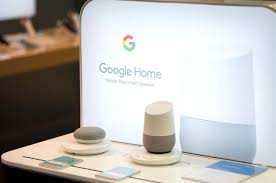Source: newsdio.com
Happy AI vacations. If you are the recent hardware recipient with the Google Assistant inside, such as a smart speaker or Google Nest smart screen, here is a guide to make the most of it.
Well done, Google Assistant can help you cook, shop, learn, remember things, stay in touch with your loved ones and interpret dozens of languages, not to mention that it acts as a remote control for your TV.
The basics
Let’s call this your standard problem feature set. This is the reason why smart speakers became popular in the first place and are the types of actions that the average user is most likely to do: how to set a timer or alarm, control smart home devices, play music and create music events. calendar.
Once you have downloaded the Home application, follow the instructions to do things like integrate your favorite music streaming service or enable voice control of smart home devices.
You’ll also want to set up Voice Match if you have multiple people in your home and want to do things like ask what’s in your personal calendar or add an event to your calendar. Voice Match works for up to six members of a household.
Some things you can do with your speaker or smart screen:
- Create lists or dictate a note for up to 30 seconds
- Get directions
- Make phone calls
- Find your phone
- Find nearby businesses
- Remember important information, such as a family member’s birthday.
- Search Google Assistant voice apps for things like quiz games or DIY tips
- Search podcasts by topic
- Follow your stock portfolio
Did you notice that I did not give instructions on how to do any of this? This is because the Google AI Assistant is designed to understand how people talk and adjust to command variations. Unlike any other form of computing, when done correctly, the conversation interface should not require training. Then ask away.
Assign a Reminder
This is also quite basic, but if you share your home address and work with Google in the Home app, you can create reminders based on the location that will appear on your phone or make a sound when you enter through the door.
In August, Google Assistant had the ability to assign reminders to up to six members of a household. Assigned reminders appear for the first time on the person’s smartphone and can also be location based or scheduled to take place at a specific date or time.
When you assign reminders with Nest Hub Max, a smart screen with facial recognition released this fall, the reminders appear on the screen when you see your face when you approach the device. If you can support Google’s facial recognition that recognizes your family, this can be very useful at home.
Choose a voice
Gone are the days of a single female assistant with a monotonous voice. Today, most artificial intelligence assistants are more expressive than a few years ago, and with the exception of Amazon Alexa, all major artificial intelligence assistants now offer female and male assistant options. Google Assistant offers you up to 11 different voices to choose from.
Text-to-speech synthesis also means that you can make Google Assistant answer queries with the voice of John Legend or UnsafeIt’s Issa Rae. Amazon Alexa can also speak as Samuel L. Jackson. It seems likely that the tech giants that make AI assistants will incorporate more celebrity personality options for voice computing in 2020.
To be clear, AI that sounds like celebrity voices is not for every exchange, but it works for responses to common requests like “What’s the weather like?” Or “Tell me a joke.”
Ask a question
Once you’ve chosen your favorite voice, you can ask factual questions from the Google Assistant about almost anything, from “Who was the 36th president of the United States?” Until “Where is the nearest Best Buy?”
You are speaking with the correct AI for your random questions: for the second consecutive year, Google Assistant ranks number 1 among virtual assistants in an annual IQ test that measures their ability to accurately answer questions. Although other attendees are catching up, Google Assistant outperforms the competition in virtually all categories, including local search and trade questions.
Another analysis this summer found that the Google Assistant is best placed among AI assistants to answer questions about the most used medications in the United States.
If you have a smart screen, the answer to the questions may also include images. And ask a question related to animals, such as “What does a whale sound like?” And you may hear the sound. Or ask for a local business and the instructions can be sent directly to your phone.
Things for children
If you’ve ever seen children interact with a smart speaker, you probably understand that many children love controlling artificial intelligence assistants, and Google Assistant has made a growing list of things children should do since they the first startup speaker was available in 2016
There are alarms with characters from Ninja Turtles, Lego or Nickelodeon who can tell jokes or share words of encouragement. There are also Google Assistant voice apps for children of characters like SpongeBob SquarePants.
Google Nest speakers and screens can hear you read a book, and when you reach certain sections, the words will signal the sound effects. My Storytime even allows parents to record stories so that their children can listen to them at ease through the Google Assistant voice application.
Children under 13 can create their own Voice Match profile that allows the Google Assistant to recognize their voice with parental permission.
Continuous Conversations
Asking questions can be fun, but what about tracking? Continuous conversations allow Google Assistant to listen for about 10 seconds after an initial exchange of a follow-up question. Ask “What is the capital of California” and then “And how many people live there?” And Google Assistant will understand the context.
This is designed to make exchanges feel more fluid and human and less like you’re talking to a basic bot.
Interpreter mode
With your permission, the Google Assistant can act as a translator for up to 44 languages. The interpreter mode for home speakers was launched in January for approximately two dozen languages. It is not a perfect solution, since translations were limited to about 15 seconds at launch, but it can still be useful in the right context.
The interpreter mode also recently reached Google Assistant on Android devices.
If you speak more than one language at home, you can enable the Multilingual Google Assistant in the startup application. That means Google Assistant can speak and answer questions in English and Spanish.
Search your photos and YouTube
This can be a lot of fun and a great way to explore your own photos or watch videos. Try “Hello Google, show me my photos from last weekend” or “Hello Google, show me my photos of Portland.”
You can also say “Hello Google, play the Warriors Game on YouTube TV” or “Hello Google, show me cats that dance tap on YouTube”. To avoid unpleasant video recommendations, responses may be limited to YouTube Restricted Mode or YouTube Kids.
It’s important to keep in mind that you don’t need a smart screen to do this: a home speaker can also work in conjunction with a Chromecast connected to your TV to display photos based on voice commands. And depending on the brand and model, the Google Assistant can also act as a remote control for your TV or Roku device to allow you to turn the device on or off, change the channel or request certain programs.
cook a meal
The Google Assistant incorporates thousands of recipes from the web, and home speakers can help with step-by-step guides for cooking a recipe. You can also check with the Google Assistant about basic cooking things, such as the amount of 500 ml in ounces, or set timers to make sure your pan doesn’t burn.
Cooking with the Google Assistant works best when you can see the recipe and scroll through the instructions, instead of waiting for a speaker to guide you at each step or for the assistant to repeat the steps when you fall behind, get distracted or look for an ingredient.
Smart screen users can swipe left to see recipe recommendations. Favorite recipes can also be saved in the Google application.
Transmit a message
When you tell Google Assistant to transmit a message, you quickly send an audio fragment to other devices in a home so you can tell everyone that it is time for dinner or bedtime.
Transmission responses were introduced to allow transmissions to be interactive even if you are away from home.
This feature naturally encourages people to have more than one speaker, because transmitting a message to someone does not make much sense if they are both in the same room.
Voice commands for privacy
This year there was a slow trickle of incidents related to the privacy of artificial intelligence assistants made by technology giants such as Amazon, Apple and Microsoft. Most of these stories involved external contractors who listened to extremely intimate audio from users who did not know that humans were reviewing the interactions recorded with their AI assistant.
In response, Amazon and Google introduced voice commands focused on privacy that allow you to quickly say things like “Hello Google, delete the last thing I said” or “Hello Google, delete everything I told you last week.”
Google makes it possible to delete voice recordings in the My Activity section of the Home application, but voice commands make it even easier and do not require you to search your account.
Downtime with digital well-being
Google also introduced Digital Wellbeing, a set of services to monitor and limit the use of technology.
With Google Assistant, this feature allows you to disable music or video or limit Google Assistant responses based on the time of day. This can be good in homes where children talk with the assistant when it is time for bed.
An important element in my wish list: Enable restrictions based on a unique voice identification, so that parents can block their talking children, but still have a full range of motion with a voice computing device, for example.
You can also disable voice or video calls and interactions with third-party Google Assistant voice applications.
Create routines
Routines are voice commands that you can customize to perform multiple actions with a single sentence. For example, you can make “Ok Google, good morning” a signal for the assistant to read the news, turn off your phone, change the temperature in your home, inform you about your daily trip and turn on your coffee maker. Or you can do a routine that turns off smart appliances when you leave home or turn them on when you return from work.
The one I use most often is “Good morning” to check my calendar and listen to the latest news.
Routines can even incorporate Google Assistant voice applications such as Headspace for things like the word of the day or meditation or breathing exercises. If you follow a certain religion, routines can be good for daily devotions or to get things like a date of the day or a word of the day.
Companies like Google and Amazon offer Routines because they know that voice commands that become part of their daily lives will likely see the highest levels of commitment. Daily routines are one of the 5 rules that Google Assistant Vice President Scott Huffman must follow for voice computing.


